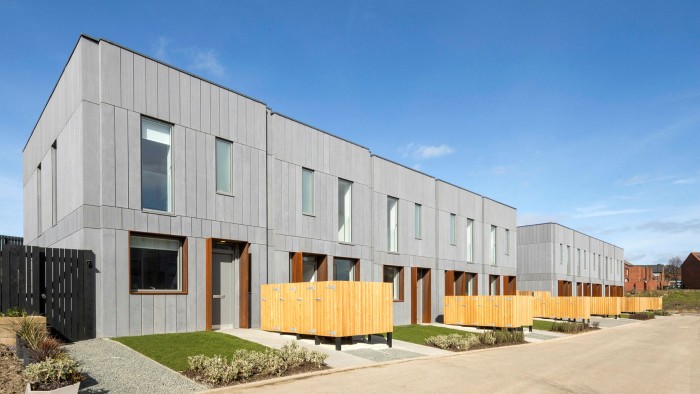
Modular Home Installation Process Explained: Step by Step
If you’re dreaming of owning a durable, cost-effective, and energy-efficient home, the modular home installation process is a journey worth exploring. This article will walk you through the entire process, from understanding what modular homes are to grasping how they transform from a concept to a reality. With housing trends continuously evolving, the spotlight is firmly on modular homes for their innovation and sustainability. In fact, the installation process is not just about putting pieces together; it’s about ensuring quality, functionality, and aesthetics converge seamlessly.
The popularity of modular homes is growing, and for good reason. The modular home installation process involves precise engineering and planning, making it far less susceptible to the delays and other issues that plague traditional construction. According to a recent report by Make UK, modular construction plays a vital role in addressing the housing crisis by providing affordable and efficient solutions. With their environmentally-friendly attributes and quicker build times, they represent a significant leap forward in sustainable living.

What Are Modular Homes?
Modular homes, also known as prefab homes, are built off-site in controlled environments. These homes come in sections, or modules, which are then transported and assembled at the site. Each module is crafted with precision, ensuring high quality. Unlike mobile homes, modular homes are attached to permanent foundations, making them as durable as traditional houses.
The Advantages of Modular Homes
Modular homes offer numerous benefits:
- Cost Efficiency: With fewer labor costs and less material waste, modular homes are often cheaper than their traditional counterparts.
- Environmental Impact: The construction process produces less waste and may use more sustainable materials, aligning with growing concerns about environmental sustainability.
- Customization: Modular homes offer a high degree of customization, allowing homeowners to choose diverse layouts, designs, and finishes.
Step-by-Step Guide: Modular Home Installation Process
1. Planning and Design
The journey begins with planning and design. Collaborating with architects and builders, you finalize your home’s look and layout. Using this step allows homeowners to inject their personal style while ensuring that all local zoning laws and building codes are met.
2. Site Preparation
Before the modules arrive, the site must be prepared. This involves clearing, leveling the ground, and laying the foundation. Proper site preparation ensures the foundation is solid, which is crucial for the structural integrity of the home.
3. Module Construction
In a factory setting, modules are built. This controlled environment ensures greater precision and protection from weather-related delays. Each module is constructed to exact specifications before being inspected for quality assurance.
4. Transporting Modules
Once constructed, these modules are transported to the site. Transportation involves careful planning and coordination to prevent any damage during the journey.
5. Assembly and Installation
Upon arrival, the modules are lifted into place using cranes. This step often attracts curious onlookers, as the assembly can be completed in a matter of days, a stark contrast to the months required for traditional builds.
6. Finishing Touches
After assembly, contractors focus on finishing work, such as wiring, plumbing, and interior and exterior finishes. This stage ensures that everything is functional and meets the homeowner’s design standards.
Key Considerations in Modular Home Installation
Financial Planning
As with any major purchase, financial planning is key. Costs to consider include the purchase price of the modular home, transportation, site preparation, and potential finishing costs. Homeowners should also anticipate permit fees and potentially increased insurance rates. For a detailed breakdown, visit our guide on cost analysis.
Choosing the Right Contractor
Selection of a reputable contractor can make or break your modular home experience. Ensure that they understand local regulations and have a portfolio of successful projects. Feedback and reviews from previous clients can be invaluable during this selection process.
Permits and Regulations
Acquiring the necessary permits is an essential part of the modular home installation process. These permits ensure your build complies with zoning laws and building safety codes. Neglecting this step can result in costly delays and legal issues.
The Future of Modular Homes
The trend towards modular homes is unlikely to slow down. They offer a solution to the housing shortage while also providing eco-conscious buyers with a sustainable living option. Besides providing affordable housing solutions, modular homes are also taking the lead in energy efficiency. More information about these innovations can be found in our article on energy-efficient modular homes.
Increasing Popularity and Innovation
From energy efficiency upgrades to climate-resilient designs, modular homes are constantly evolving. The ability to innovate quickly in a factory setting allows companies to implement the latest sustainable building practices. Read more about these innovations in our article on climate-resilient housing.

FAQs about Modular Home Installation Process
Q: How long does the modular home installation process take?
A: The process typically takes a few months from start to finish. This includes time for planning, construction, and assembly.
Q: Are modular homes more affordable than traditional homes?
A: Generally, yes. The cost savings come from reduced labor and material expenses, as well as efficiencies in the construction process.
Q: Do modular homes last as long as traditional homes?
A: Yes, if not longer. Quality control in the factory setting ensures durable construction, and proper maintenance can extend the lifespan similarly to traditional homes.
This article contains affiliate links. We may earn a commission at no extra cost to you.